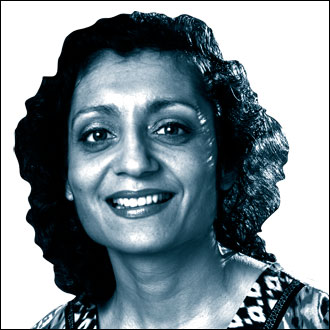When doctors become patients

When I was a house officer on a busy medical ward, we had a patient I will always remember in a side room. She was 32, had metastatic breast cancer and was dying. Those were the years before preferred place of death was an option, and everyone died in a hospital bed. Every day I would perform my morphine rounds; crossing out the prescription in her syringe driver and replacing it with a higher dose. I didn’t venture much into that room and neither did the nurses. I knew the patient was likely to be fearful and lonely, yet I found it almost impossible to overcome my anxiety about her illness. You may be wondering what she had done to be so emotionally neglected. Her only crime was that she was a GP.
All GPs know that we make the worst patients, but have we reflected on how we treat sick doctors? Fortunately my only inpatient experience was for childbirth, and I was home within two days. However, I have been the not-so-silent bystander with my husband and children at various appointments and I acknowledge those consultations must have been challenging for the GP.
The difficulty of consulting with doctors is that some of the basic consultation tools, such as eliciting a patient’s ICE, bring an entire three-act play. We have formulated a differential diagnosis, a battery of investigations and a management plan. This is when mutual trust, respect and empathy become crucial. Our consultation models just don’t work for doctors and it’s easy to see how our emotions can be ignored when we become patients. Dr Kate Granger has been an inspiration in this area, highlighting the need for all staff to introduce themselves. I wonder how much of her experiences could be attributed to the fact that she is a member of a group that is often feared and misunderstood by health professionals.
Years ago, Epsom Hospital in Surrey had a private wing that accommodated any sick employee, from the cleaner to the consultant. I doubt this VIP service would happen now. There are still many doctors who will give out personal numbers and email addresses to colleagues and I am grateful to the paediatric GPSI who has done this for my daughter. But I don’t think it is such a straightforward decision for all doctors, especially the younger ones. The boundaries of the doctor-patient relationship are very blurred when you are treating colleagues or their family. We have distinct needs, but these are often ignored or neglected. As a profession, we receive no training on how to manage one another’s health.
I am still ashamed of my immaturity and inability to cope with a dying GP when a houseman and I reflect on how different her experience would be today. Although it is likely she would have been nursed at home by an expert team, I still wonder how prepared they would be to care for one of their own.
Dr Shaba Nabi is a GP trainer in Bristol









